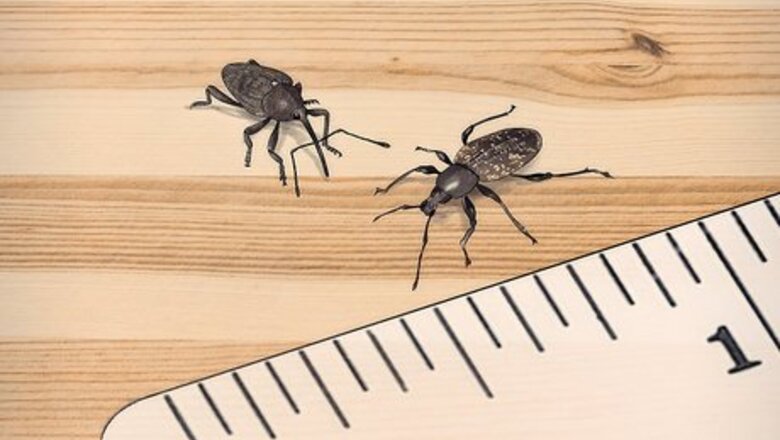
views
Inspecting Foods Before Purchase
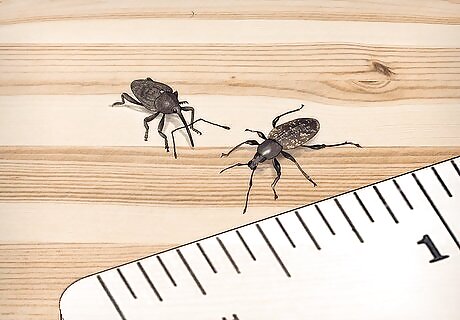
Learn to identify weevils. The best way to prevent weevils from getting into your home is to avoid buying food that’s infested with them. To do this, you have to be able to identify weevils. Both rice and granary weevils have divided bodies made up of a head, thorax, and abdomen. Each species ranges from one-eighth inch (3.2 mm) to three-sixteenth inches (4.8 mm) long. Rice weevils are a dull red-brown and can fly. They're usually found in slightly warmer climates. They also have four lighter spots on their bodies. Granary weevils are a shiny red-brown, they cannot fly, and they're usually found in slightly cooler climates.
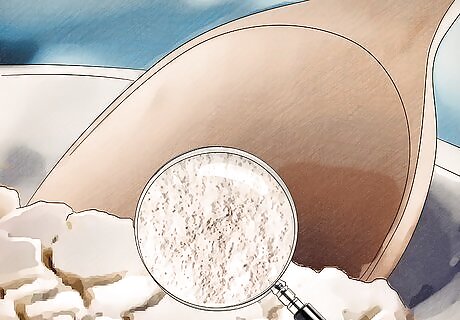
Buy grains in bulk when possible. When you buy foods in bulk, you can actually inspect the food itself for an infestation, and this drastically reduces the chances that you'll end up with infested foods. Foods to buy in bulk include anything that might attract weevils, including: Flours Cereal Rice Quinoa Pasta Oats Barley Corn Wheatberries
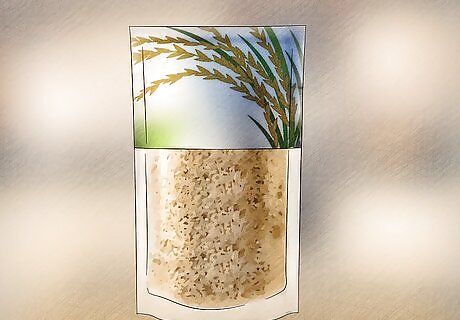
Purchase foods in clear packaging. When you cannot buy these foods in bulk, look for them in clear packaging so that you can still inspect the contents. Many grocery stores that don’t have bulk bins will still have prepackaged bulk items that are stored in clear plastic bags or containers. When buying these items, use your hands to move the contents of the bag around to inspect for weevils.
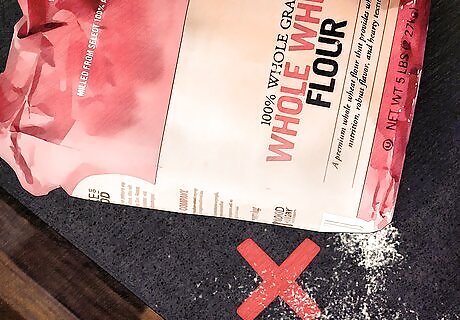
Avoid foods with damaged packaging. If you must buy prepackaged grains, flours, or other dry goods, inspect the packaging before you purchase them. Look for holes, punctures, or other signs of damage that could indicate an infestation.
Keeping Weevils Out of the Pantry
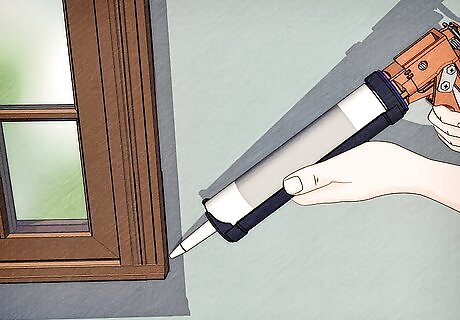
Seal possible entry points into your home and pantry. Weevils most often get into your house through contaminated food, but they can also make their way in through access points if they've already infested the area. Things to look for and fix include: Damaged weather stripping around doors and windows Missing areas of caulk around doors and windows Torn screens in doors, vents, and windows Cracks and openings in your pantry (which can be sealed with caulk)
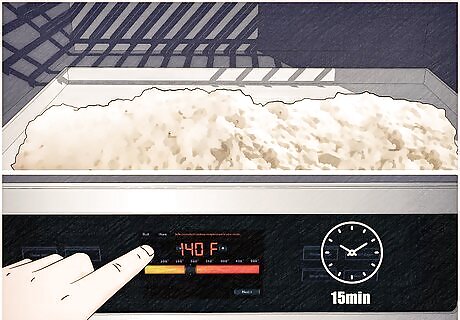
Kill weevils that could be in your grains. Even if you buy all your grains in bulk, it’s still possible that contaminated food will end up in your home. Luckily, you can prevent an infestation by killing the weevils before the eggs hatch or the females lay eggs. There are two ways you can do this: Heating: This works best for whole grains (rice, for instance), but shouldn’t be used for ground grains or powders. Heat your oven to 140 F (60 C). Lay your grains out on a baking sheet. Bake the grains in the oven for 15 minutes. Allow to cool before storing. Freezing: This is suitable for powdered and ground grains, but also works for whole grains. Simply place the newly purchased bag or container of grains in the freezer and leave it undisturbed for three days. Allow to thaw before storing.
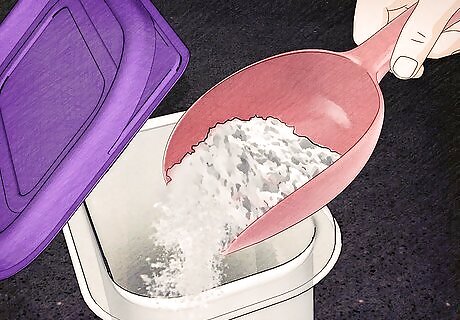
Transfer grains to weevil-proof containers. Once you’ve killed any weevils that might have been hiding in your grains, transfer the grains to glass, metal, or thick plastic containers that have airtight lids. Weevils can eat through paper and thin plastic.
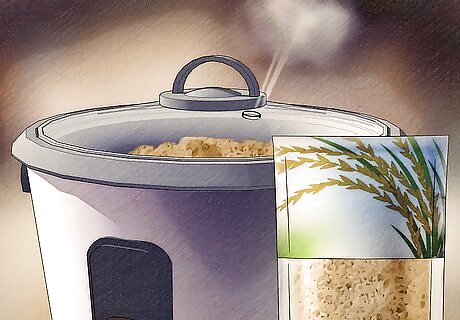
Eat food quickly. To ensure that weevils don’t have time to invade your dry goods, buy your grains and flours in smaller quantities so you eat them quickly and don’t leave them in the back of the pantry for months. This is another time when buying in bulk can be beneficial, because you can control the exact amount that you purchase. Throw out unused, expired stored products.
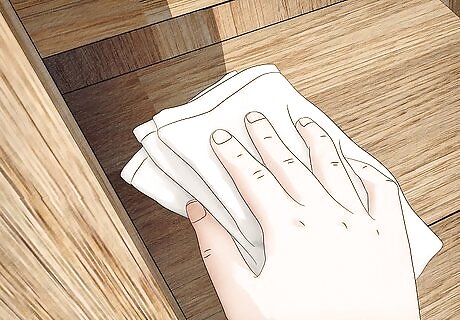
Keep pantry shelves clean. Weevils may be attracted to your home if there are bits of food lying around in your pantry, such as flour dust, spilled cereal, or fallen grains of rice. To ensure that there's nothing in your pantry that might attract them, keep your shelves clean and free of food. Once every month or two, remove all the food from the pantry or cupboards and vacuum the shelves. Clean underneath the stove and refrigerator as well. Clean up spills and messes as soon as they occur. You can also be proactive by making a habit of regularly looking through your storage bins, pantry, and containers to look for signs of infestation.
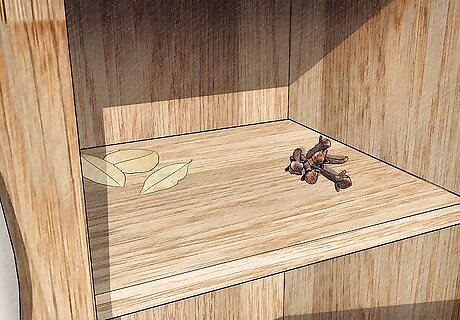
Use herbs to help deter weevils. There are many herbs that may act as weevil repellants. You can use these herbs in your pantry and in your grain containers to help keep weevils away. Herbs that may work as weevil deterrents include bay leaf, clove, rosemary, black pepper corns, and garlic cloves. A few bay leaves can be placed inside each grain, flour, and cereal container. Use the other herbs on the pantry shelves, otherwise they may flavor your grains.
Treating a Weevil Infestation

Remove all the food from your cupboards. When you discover a weevil infestation, the first thing you have to do is get all the food off the shelves in your pantry or cupboard. That way, you can clean all the shelves and inspect the food for contamination. Set up all the food in one location, such as in your kitchen.
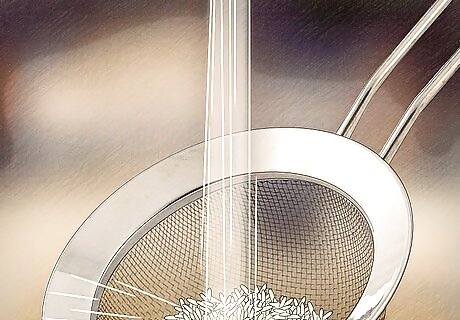
Rinse infested grains. Go through all the food that was in your pantry or cupboards and inspect for weevils or signs of infestation. If you find weevils in whole grains that can be rinsed, you can clean the grains and salvage them. Ideal candidates for rinsing include whole-grain rice, barley, and buckwheat. Place the grains into a strainer and hold it under running water. Use your hand or a spoon to comb through the grains, making sure the water rinses them all. When the weevils have been rinsed away, place the grains on a baking sheet and into a 140 F (60 C) oven for 15 minutes to kill any eggs and dry the grains.
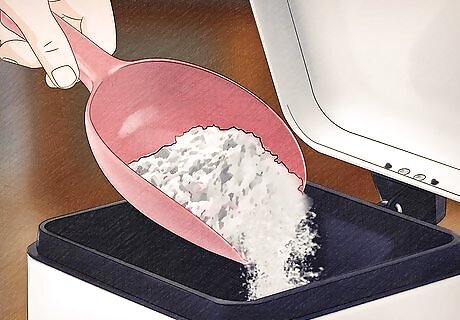
Discard infested food that can't be rinsed. Many infested foods, such as flours and cereals, cannot be rinsed without being damaged. Throw these foods out. Place them in a large garbage bag and tie the bag tightly. Remove the bag with the contaminated foods from your house immediately so the weevils don’t eat their way out and infest again. If you don’t feel comfortable salvaging infested foods like rice, simply discard them as well.
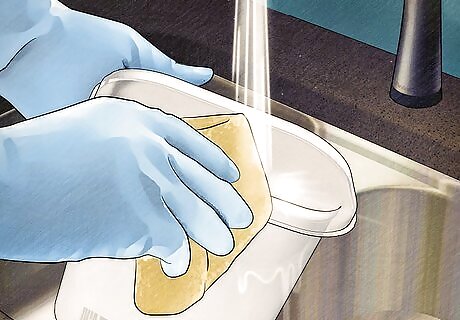
Wash contaminated storage containers. Once you’ve gone through and thrown out all your infested foods, wash the containers with hot, soapy water to remove any eggs or larvae that might still be present. For dishwasher-safe containers, run the dirty containers through the dishwasher instead.
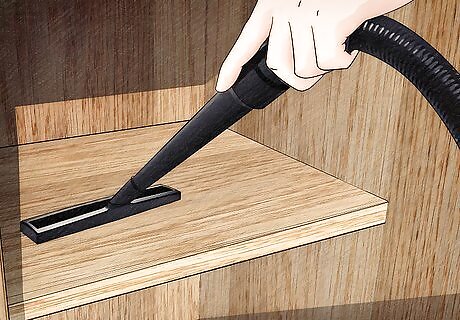
Vacuum all the shelving. This will serve the dual purpose of sucking up weevils and removing their food source. Make sure you get into all the nooks, crannies, corners, and cracks. Vacuum the floor in your pantry as well, or the counter under the cupboards.
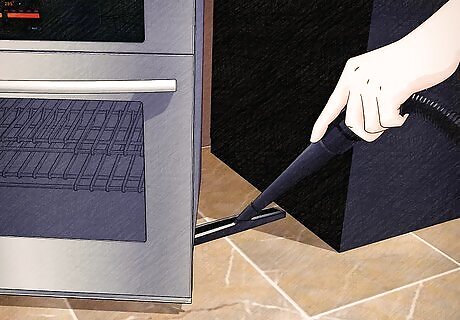
Clean under all your appliances. Once weevils infest your pantry, they may travel out to explore new areas of your kitchen if they're attracted to any other food sources. Crumbs and forgotten bits of food can often be found under appliances, so it’s important to clean under these as well. Pull out your stove and fridge and vacuum thoroughly underneath before replacing them. You should also move and vacuum under your microwave, toaster, toaster oven, and any other countertop appliances you have.
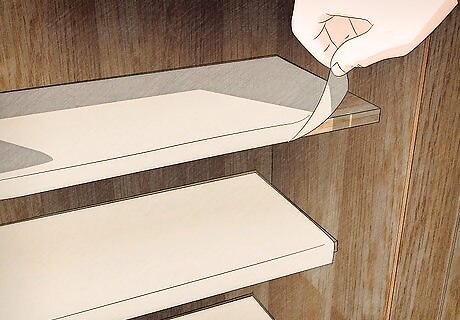
Replace old shelf paper before returning food to the pantry. Weevils can hide in places you'd never think, including underneath old shelf paper on the shelves in your pantry or cupboard. To ensure that you don’t have any stowaways, and to remove any eggs and larvae, remove the shelf paper that’s lining your shelves. Discard the old shelf paper immediately. Vacuum and clean the bare shelves before installing new paper. Once everything has been cleaned thoroughly and the new paper installed, you can start returning non-contaminated food to your pantry or cupboard.




















Comments
0 comment